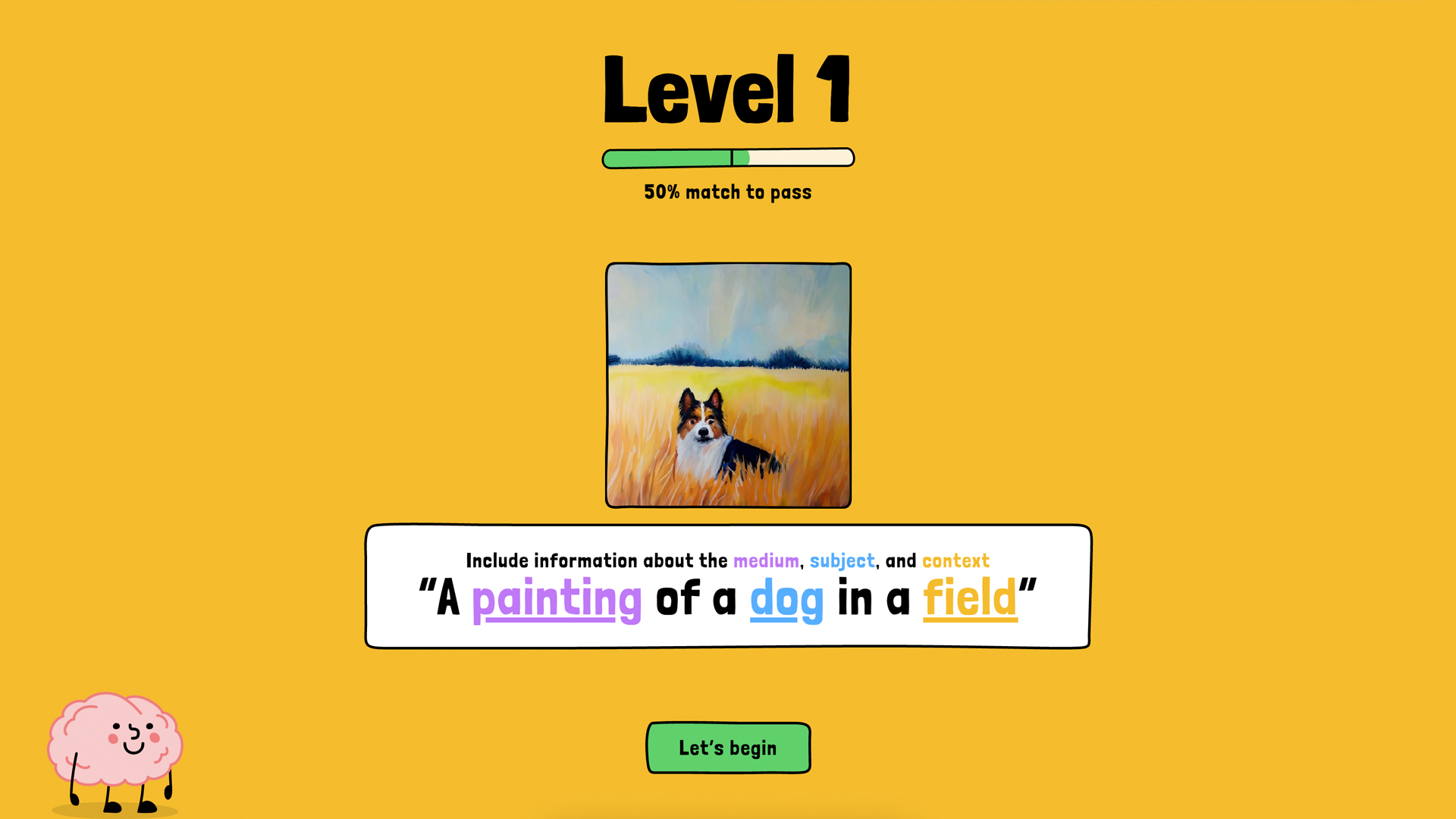In this Post, we will find out 19 of the latest and greatest AI tools released by Google. You won’t believe what some of these tools are capable of, and the best part is that some of them are not as popular yet. Let’s find out!
1. Socratic
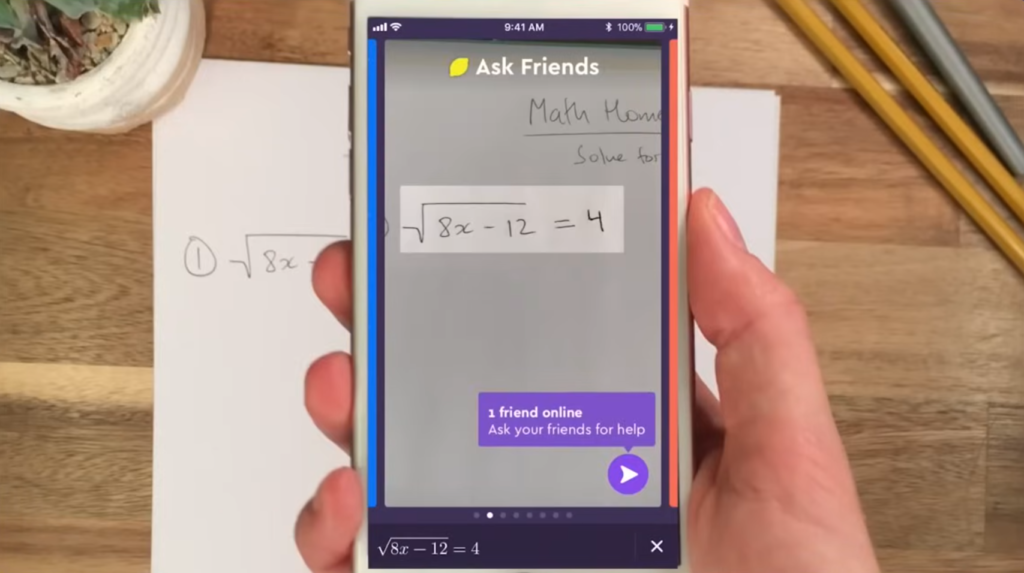
Kicking things off on a very high note is Socratic. This tool could easily be every student’s best friend. Socratic was not originally designed by Google; however, they acquired the company in 2019 and started powering the service with their infrastructure. Socratic helps students with the power of AI by supplying answers in the form of videos, text, links to materials, and more. It covers a wide range of subjects including social studies, science, literature, and, of course, mathematics.
For example, if a question has you stumped and you are completely clueless about how to solve it, Socratic uses AI magic to get you the best possible solutions. All you have to do is take a photo of the problem you are trying to solve, like an equation that would be difficult to type. The results come in the form of an overview of the concept you have searched, step-by-step explanations, video walkthroughs, as well as additional resources that may be useful. The best part is that its solutions are displayed in a manner that is both explanatory and visually engaging. So, math does not have to be boring after all!
2. Notebook LM
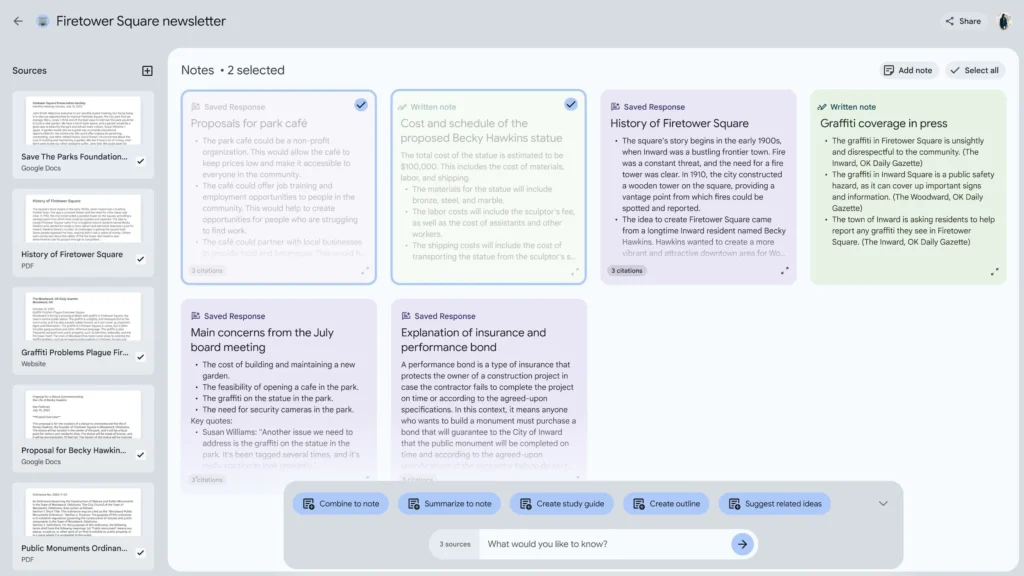
Next up is Notebook LM, originally codenamed Project Tailwind when it debuted at Google’s I/O event in 2023. Made available for beta testing by late 2023, it is designed to be your virtual research assistant. If you are a student or a researcher, you may know that keeping and managing notes can be quite a chore, which is why many people seem to struggle with it. Apart from trying to organize these notes, finding all the information that you need when you need it is an even bigger problem.
Let’s assume you are trying to find information in a research paper. The regular method would be to start reading through the entire paper in hopes that you will find exactly what you need. Nine out of ten times, it is likely that you will miss the most important parts when reading through very long pieces of text. Alternatively, you can use Notebook LM by uploading the files to its platform and simply asking the right questions. Notebook LM will then look through the document in a split second to find all the information relevant to your question. It also comes complete with links to citations and sources for the information provided.
3. Google Vids
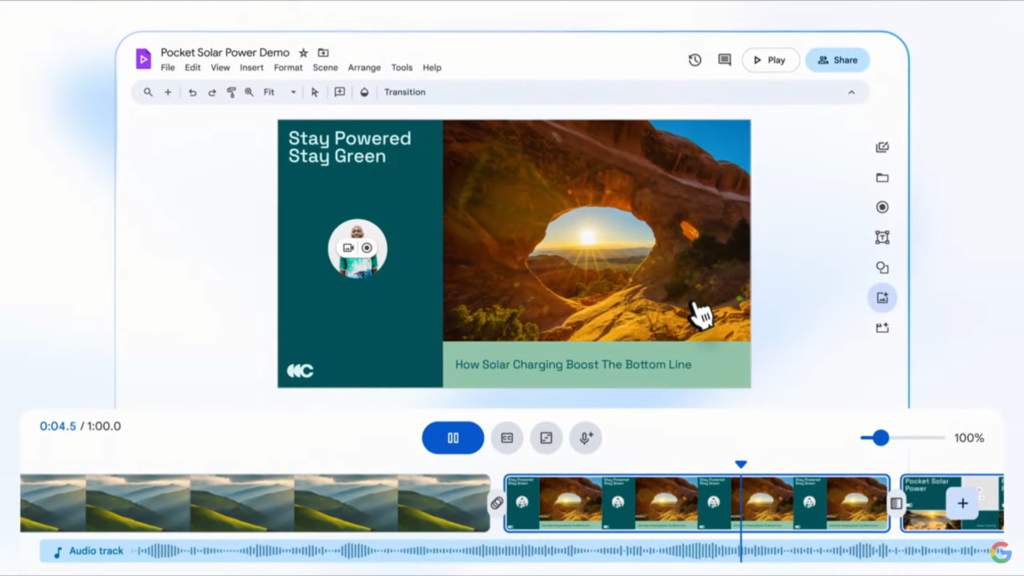
Google Vids, a tool yet to be released publicly. However, what this tool is expected to do on release will change the world of video creation. Think about the amazing collaborative nature of documentation tools like Google Docs, Spreadsheets, and Slides, but this time you are getting the same level of collaborative freedom with Google Vids. Google is calling it an AI-powered video creation app for work. It will assist you with video writing, production, and editing. It can also build an editable storyboard, and after you have chosen a video style, it will automatically create a draft with scenes made up of stock images, videos, and music. It will also offer preset voiceovers and the option to record your own voice. When made public, Vids will function alongside other tools like Google Docs, Sheets, and Slides.
4. MusicFX
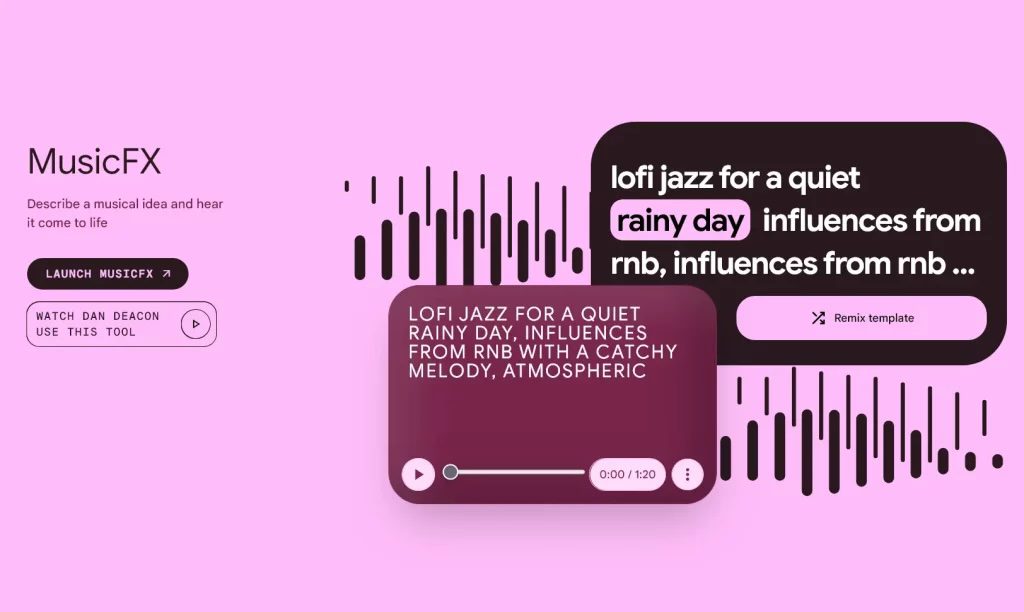
In December of 2023, Google launched MusicFX, an AI music generator designed to produce sample instrumentals from just text prompts. Released as an experiment in Google’s AI Test Kitchen, it can create amazing sounds with a decent variation of styles and probably the longest tracks of AI-generated music. Google added an extra feature called Live DJ, which allows users to do more with the results. If you generate a sound and don’t like how it sounds, you can make edits and modifications rather than generating a new one.
5. Instrumental Playground
Instrumental Playground is built on the foundation of Google’s MusicLM model. This tool is exactly what the name implies: a playground. It uses AI to combine words and instruments for more specific results. While still experimental, it is quite the marvel. Instrumental Playground offers access to more than 100 instruments from all over the globe and creates 20-second music clips. Beyond just asking for certain instruments, this tool allows you to add adjectives to the chosen instrument, so you can request samples to be calming, deep, or dramatic depending on what you are going for.
6. ImageFX
Moving from audio to visual, we have ImageFX. AI image generators have risen to untouchable fame over the last few years of massive advancement in AI technology. With this in mind, Google released ImageFX. Like any other image generator, it works with text prompts. As long as you can properly describe the image you are trying to achieve, ImageFX can create it. The twist here is that compared to other image generation software, Google’s ImageFX is completely free. However, it comes with a tiny caveat: it has safeguards to filter words that are even remotely offensive to prevent any unplanned outcomes. Other than that, you can sign in with Google and try it out yourself for some pretty interesting results.
7. Say What You See
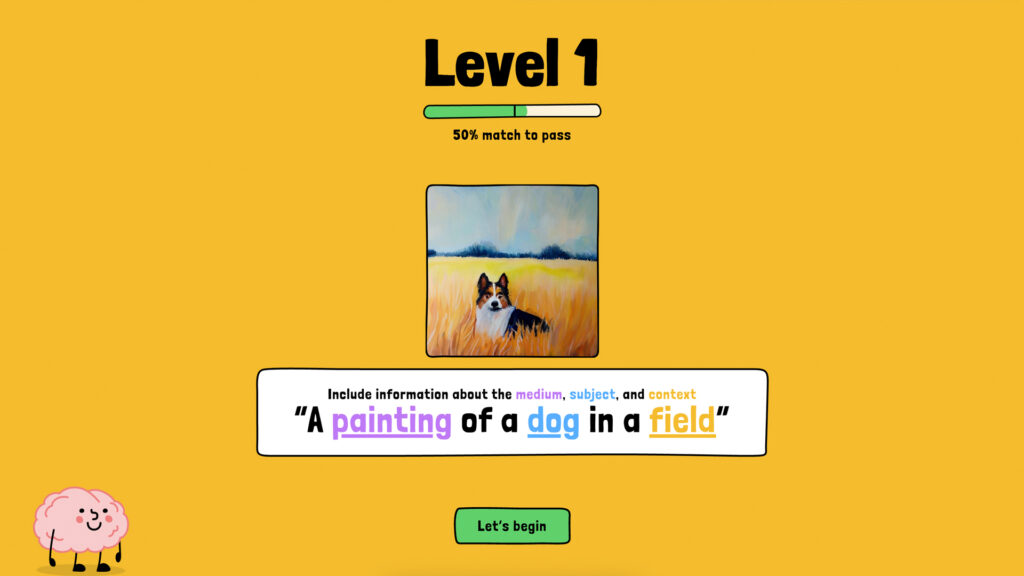
Say What You See: The use case for this tool may not be the most widespread, but it can be handy for most people. If you are looking to take advantage of the many prompt-based image generation tools, you should definitely refine your skills with Say What You See.
8. Magic Compose
Magic Compose: Google has always led the pack in the software department, and now, thanks to generative AI, they can do so much more with their existing tools. Magic Compose is one such tool. If you struggle with texting or want to improve your text messages, you should check it out. It draws from the best of guided customizations on Android and the best of Google’s generative AI to make texting a more interesting experience than usual.
Unfortunately, Magic Compose is restricted to use on Google’s Messages app. You can type your message and let Magic Compose know what tone you are going for, and the tool will automatically rewrite your text. Whether you are going for a formal format or prefer to be more casual, Magic Compose will get the job done in seconds.
9. Google AutoML
Google AutoML is a suite of machine learning products that enables developers to train high-quality models specific to their needs with minimal expertise in machine learning. It includes tools for image, video, text, and tabular data, making it versatile for various applications, from visual recognition to language understanding.
10. Google Cloud AI Platform
Google Cloud AI Platform provides a comprehensive set of tools and services to help data scientists and developers build, deploy, and manage machine learning models at scale. It supports popular frameworks such as TensorFlow, PyTorch, and scikit-learn, and offers robust features for data preparation, training, and model deployment.
11. Google DeepMind AlphaFold
AlphaFold, developed by Google’s DeepMind, is an AI system designed to predict protein structures with high accuracy. It has significant implications for biological research and pharmaceutical development, providing insights into the folding patterns of proteins and aiding in the understanding of diseases and the discovery of new treatments.
12. Google Duplex
Google Duplex is an AI service that uses natural language understanding and generation to carry out real-world tasks over the phone. It can make reservations, schedule appointments, and perform other conversational tasks on behalf of users, making it a powerful tool for personal and business use.
13. Google Cloud Vision API
The Google Cloud Vision API enables developers to integrate image recognition capabilities into their applications. It can detect objects, faces, and text in images, classify images into predefined categories, and provide insights based on visual data. This tool is particularly useful for applications in e-commerce, content moderation, and visual search.
14. Google AI Platform Notebooks
Google AI Platform Notebooks provides managed Jupyter Notebooks in the cloud, making it easy for data scientists to build, train, and deploy machine learning models. It integrates seamlessly with other Google Cloud services and supports collaborative work, enabling teams to share and manage their notebooks efficiently.
15. Google BigQuery ML
BigQuery ML allows data analysts and data scientists to build and operationalize machine learning models directly inside Google BigQuery using simple SQL queries. It simplifies the process of applying machine learning to large datasets, making it accessible to users with varying levels of expertise.
16. Google AI for Social Good
Google AI for Social Good encompasses a range of initiatives and tools aimed at leveraging AI to address global challenges. This includes projects in healthcare, environmental sustainability, accessibility, and education. Google’s AI-driven solutions in these areas aim to create positive social impact and contribute to a better world.
17. Google Coral
Google Coral offers AI hardware and software tools to help developers build intelligent edge devices. It includes the Edge TPU, a custom accelerator chip designed to run machine learning models efficiently on edge devices. Coral is ideal for applications requiring low-latency inference, such as IoT devices, smart cameras, and robotics.
